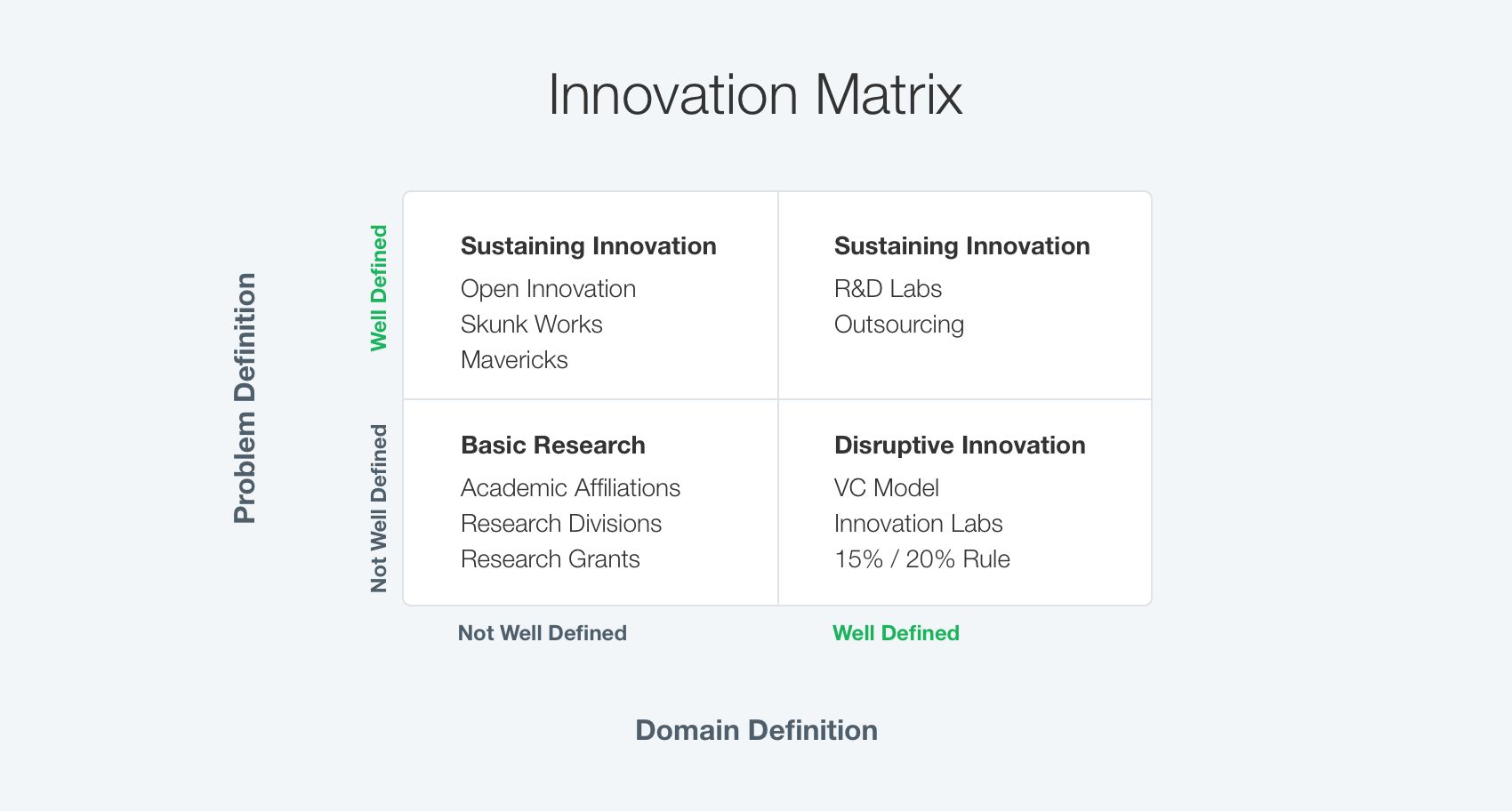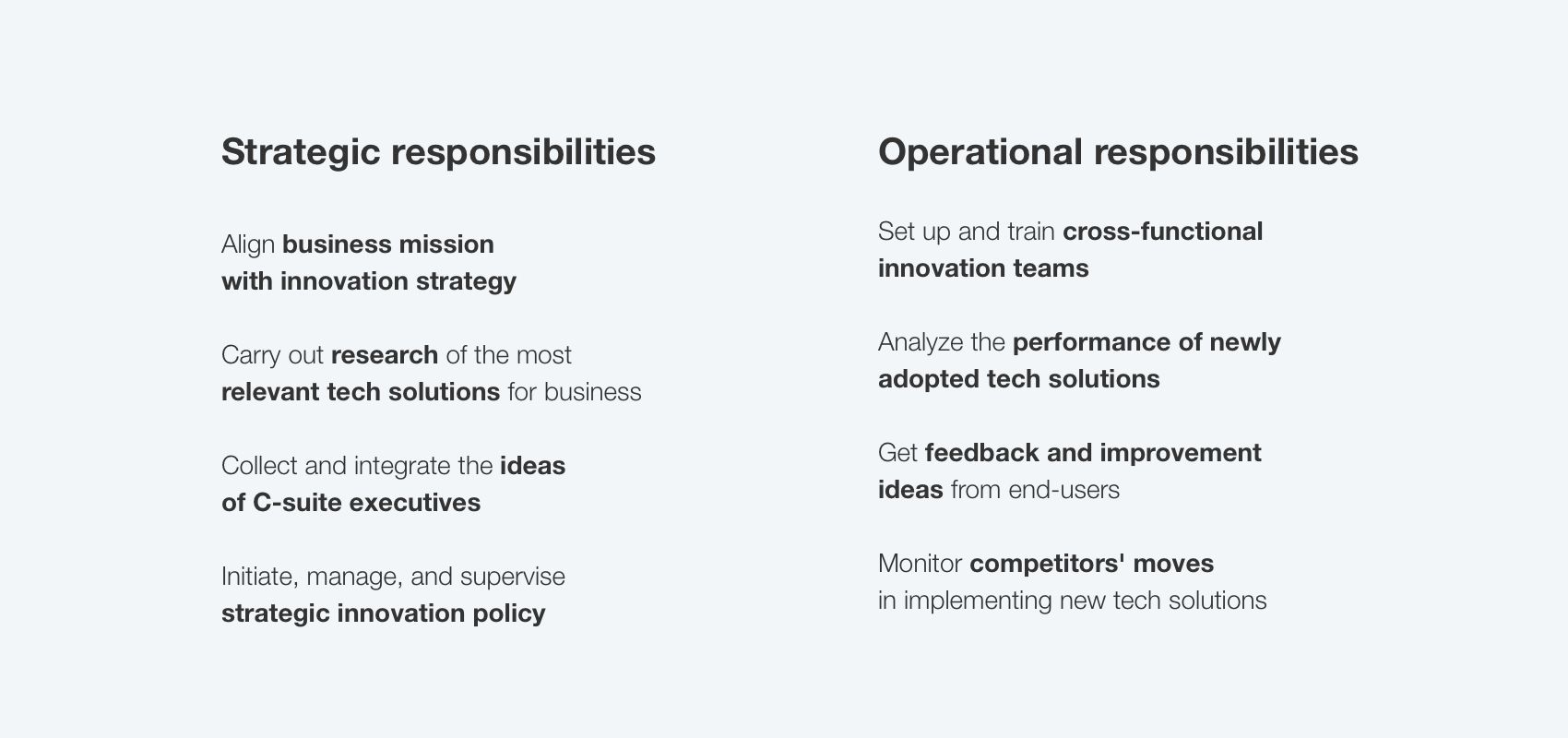Head of Innovation, Chief Innovation Officer, Innovation Manager...call the role whatever you like, the point is that these guys are desperately needed by retailers to drive the business through multiple challenges faced by the industry today.
Above all, retailers of all types are eager to outperform rivals by building a personalized shopping experience as that’s what 80% of consumers seek for. Under these circumstances, adopting advanced customer-centric technical solutions has no alternative.
Retailers need Head of Innovation to find, implement, and manage tech-savvy solutions. Let’s get down to business and find what makes the role of Head of Innovation crucial for all types of retail.
Innovate or die: why retail can't ignore innovation?
Technology and innovations are the main drivers triggering transformations in retail industry for the last few decades.By the end of the year, global retail investments in tech solutions would likely reach the point of $203 billion.Innovations are retailers’ core opportunity to build unique shopping experience and secure strategic advantage.
The industry giants’ monopoly on innovation was undermined in the mid-2010s when a plethora of brand-new solutions emerged reshaping an entire retail landscape. These solutions impacted every dimension of business including:
-
Supply Chain Management: automated payments, optimized logistics’ planning and monitoring.
-
Pricing: advanced market analytics and price optimization solutions powered by ML
-
Mix and Assortment Management: complex solutions synchronizing order management, stock operations, retail accounting, and inventory.
-
Marketing and Advertising: promo campaigns design, AI-driven interactions with customers
According to Forbes, there are six key trends in retail tech development to watch for this year. First, more cloud-connected devices will be used by all the stakeholders. Second, Amazon Go will remain a landmark model for all retail enterprises. Third, AI and robotics will be used more intensively across the industry. Fourth, drones would get more integrated into the inventory, in-store, and delivery operations. Fifth, innovative technologies will substantially reduce the cost of returns. Finally, digital shelves would continue substituting more traditional forms of product representation.
Outlined above list proves that literally each aspect of retail business is nowadays driven by advanced software. What it means is that retailers simply cannot afford disregarding innovation management at their organizations. And that’s why the role of Head of Innovation is vitally important.
Innovation management in retail: where to start?
Innovation in retail is built upon three integral elements. These are innovation competency, strategic vision, and management capabilities. The first depends primarily on the overall business maturity which, in turn, encompasses an idea management process and successful implementation records. Strategic vision is needed to make sure the innovation policy is coherent with the retailer’s strategic plans and resource capacity. Finally, management capabilities are crucial to allocate and use resources wisely.
Forbes Tech Contributor Greg Sattel believes that the efficiency of innovation management depends on two fundamental categories — problem definition and domain definition. The first category implies a capability of concise problem framing, which is a prerequisite of developing an actionable strategy in retail. At the same time, domain definition means allocating the right resources at the right time.
Using problem definition and domain definition as the two integral categories in innovation management, Sattel designed a so-called Innovation Matrix. The matrix shown below could be used by all retailers willing to locate their business on a path to tech sustainability and define the next steps to improve management process.

Deloitte’s Retail360 report emphasizes another three pillars of effective innovation management in retail — Centres of Excellence (CoE), Product focused agile teams, and Innovation labs. These structural elements could operate either alone or in combination with each other depending on retailer’s maturity, goals, and resources. The point is that, in any case, the business needs a Head of Innovation to lead a team and manage an entire innovation cycle.
What does Head of Innovations in retail do?
The primary role of Head of Innovation in retail implies planning, managing, and delivering innovation. Besides shaping an environment for strategic and operational innovation, Head of Innovation is also responsible for cross-team communication as innovations’ implementation requires an involvement of teams and employees holding diverse roles. An ability to transform C-suite’s strategic vision of innovation into clear milestones for each stakeholderis also crucial for Head of Innovation.
Even though the set of specific tasks may vary across industries or organizations, the core strategic and operational responsibilities are the same for all large retailers.

The role of Head of Innovation in retail might take various forms. Yet, all of them are based on two integral capabilities — Head of Innovation must be both an innovator and an enabler. In his entry for Lead Innovation Blog, Michael Putz puts a list of roles that Head of Innovation can take up. These include:
- Idea Finder
- Idea Manager
- Innovation Scout
- CIP Manager
- Innovation Strategist
- Futurologist
- Organizational Developer
- Developer
- Patent Manager
- Portfolio Manager
- Funding Manager
The list is a good illustration of the multi-functional essence underlying the responsibilities of Head of Innovation in retail. These roles also shed light on specific skills and qualifications that should be taken into account while hiring Head of Innovation.
What skills and qualifications and crucial for Head of Innovation?
Being aware of the skills needed for Head of Innovation is crucial if you are either hiring one or going to manage innovation yourself. There is no ultimate set of qualifications that each Head of Innovation is ought to have. That’s why we’ve analyzed dozens of job descriptions and guidelines to make our own list of skills that would definitely help Head of Innovation to succeed in retail. Here it is:
- Credible tech expertise: Head of Innovation is ought to have proven records of successful innovation implementation to ensure the relevance of proposed initiatives
- Predicting and communicating the future: it’s not enough to have an insightful vision of industry's future, Head of Innovation should also be capable of delivering and communicating ideas with all the stakeholders
- Driving involvement around innovation: advanced software and technology in retail affect users of various roles and positions, that’s why Head of Innovation should have leadership and motivation skills to engage the end users
- Identifying and persuading opponents: changes always come together with some kind of resistance, so conflict management skills are definitely a must for a Head of Innovation
- Risk management: if you want the team to be an innovation rockstar, you must be prepared for failures; because of that Head of Innovation should be both a great learner and a risk manager
Recent developments in the retail industry have proven that strategic innovation management has no alternative. What it means is that Head of Innovation becomes one of the most important positions in business. There is no doubt that each retailer has its own requests on some skills or qualifications of Head of Innovation depending on industry as well as business goals and constraints. In any case, outlined above capabilities may serve as a good reference point and ultimate framework for all retailers willing to refresh their innovation policy.
FAQ
Automation is a good way to improve retail operations as it saves time while also reducing the risk of human mistakes.
Innovations are aimed at boosting productivity. Therefore, productivity improvement is one of the most important criteria while choosing and implementing innovative solutions.






